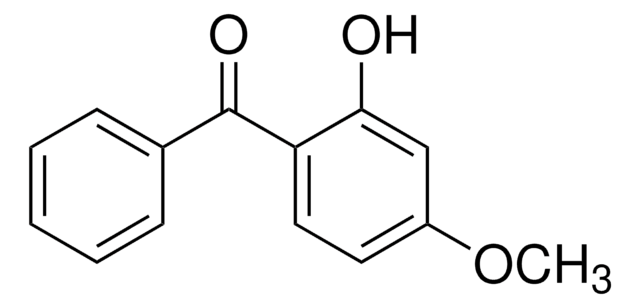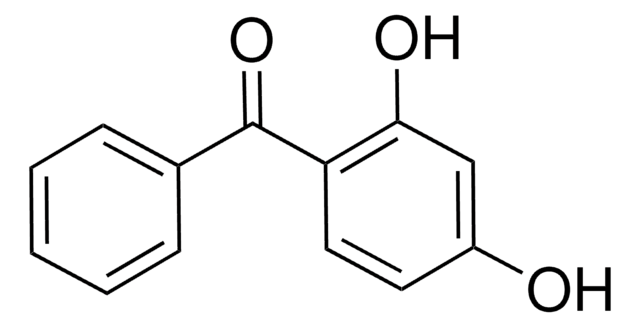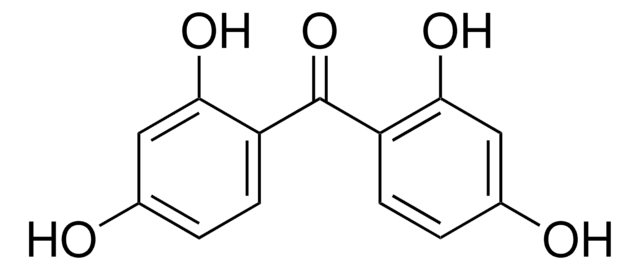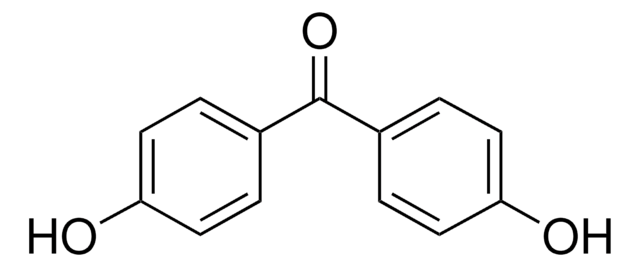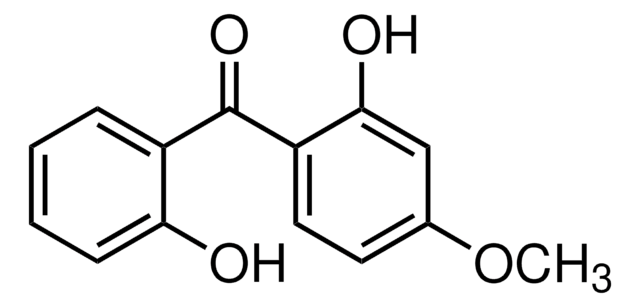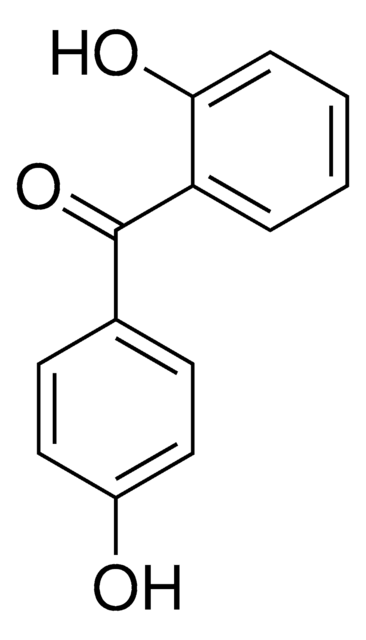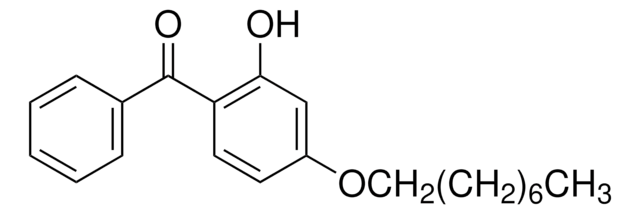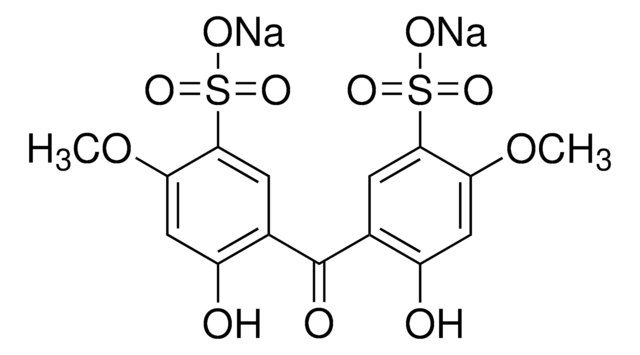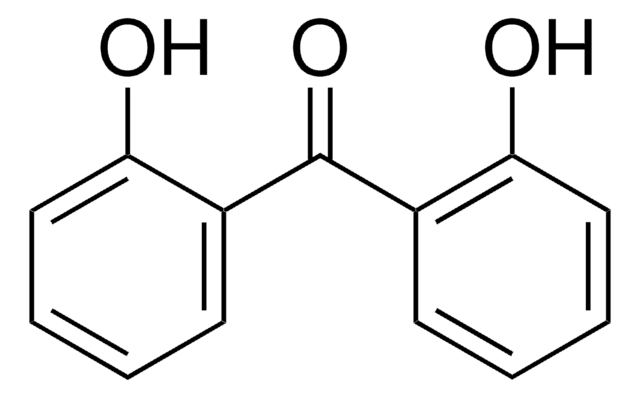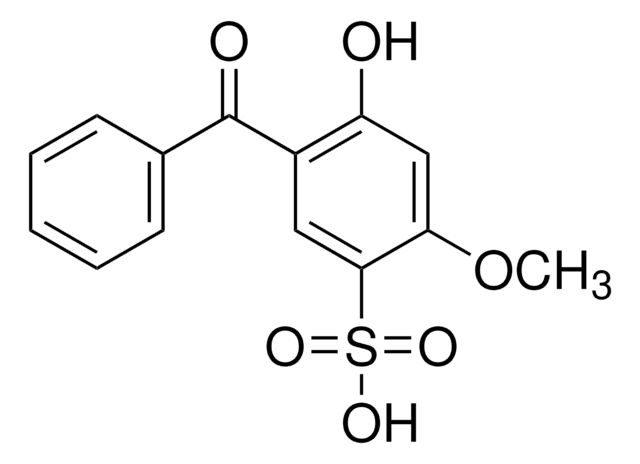126217
2,4-Dihydroxybenzophenone
99%
Synonyme(s) :
DHB
About This Item
Produits recommandés
Niveau de qualité
Essai
99%
Forme
powder
Pf
144.5-147 °C (lit.)
Chaîne SMILES
Oc1ccc(c(O)c1)C(=O)c2ccccc2
InChI
1S/C13H10O3/c14-10-6-7-11(12(15)8-10)13(16)9-4-2-1-3-5-9/h1-8,14-15H
Clé InChI
ZXDDPOHVAMWLBH-UHFFFAOYSA-N
Informations sur le gène
rat ... Ar(24208)
Vous recherchez des produits similaires ? Visite Guide de comparaison des produits
Catégories apparentées
Application
- Substituent Effects on the Ultraviolet Absorption Properties of 2, 4-Dihydroxy Dibenzophenone: This research examines how different substituents affect the UV absorption characteristics of 2,4-dihydroxybenzophenone, a compound important for its UV protective properties (Wu et al., 2022).
- Kevlar® and Nomex modification via 2, 4-dihydroxybenzophenone anchoring improves water repellency and induces antibacterial and UV protection properties: Explores the enhancement of Kevlar and Nomex fabrics by anchoring 2,4-dihydroxybenzophenone to improve their functional properties (Tonis et al., 2023).
Informations légales
Mention d'avertissement
Warning
Mentions de danger
Conseils de prudence
Classification des risques
Aquatic Chronic 2 - Eye Irrit. 2 - Repr. 2
Code de la classe de stockage
11 - Combustible Solids
Classe de danger pour l'eau (WGK)
WGK 2
Point d'éclair (°F)
257.0 °F
Point d'éclair (°C)
125 °C
Équipement de protection individuelle
dust mask type N95 (US), Eyeshields, Gloves
Faites votre choix parmi les versions les plus récentes :
Déjà en possession de ce produit ?
Retrouvez la documentation relative aux produits que vous avez récemment achetés dans la Bibliothèque de documents.
Les clients ont également consulté
Notre équipe de scientifiques dispose d'une expérience dans tous les secteurs de la recherche, notamment en sciences de la vie, science des matériaux, synthèse chimique, chromatographie, analyse et dans de nombreux autres domaines..
Contacter notre Service technique